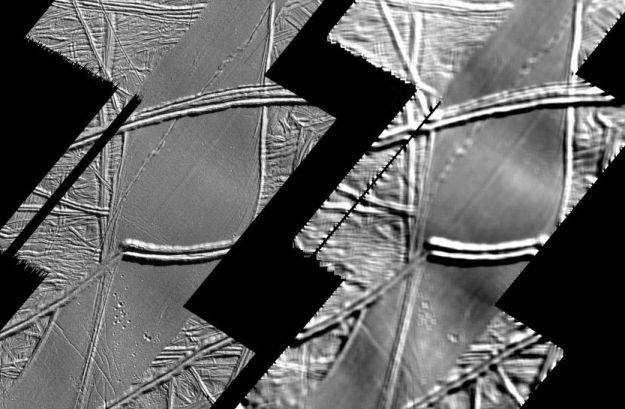
|
Credit & Copyright: L. M. Prockter (JHU APL),
R. T. Pappalardo (Brown University),
JPL,
Galileo Project,
NASA
Explanation:
Astypalaea
Linea on
Jovian
ice moon
Europa is the broad smooth
region running through
these images recorded by the Galileo
spacecraft in 1998.
The pictures are different computer processed versions of the
same mosaic -- on the left, small scale details have been enhanced
while on the right, large scale features are emphasized.
In both versions, the bold
criss-crossing ridges believed
to result from the upwelling of new material through cracks in the surface
ice are apparent.
But more easily seen on the right are
recently recognized
gentle rises and dips, about 15 kilometers across, which likely formed
as the icy surface was compressed by the addition of
the new material.
Further
evidence that stress is folding
Europa's surface
is offered by the presence of smaller cracks and wrinkles more
easily seen on the left.
These span the width of the broad swells suggestive of
anticlines and synclines familiar to geologists
on planet Earth.
Though
ice covered, the surface of Europa is thought
to be geologically active, riding over a
substantial
ocean of liquid water.
|
January February March April May June July August September October November December |
| ||||||||||||||||||||||||||||||||||||||||||||||||
NASA Web Site Statements, Warnings, and Disclaimers
NASA Official: Jay Norris. Specific rights apply.
A service of: LHEA at NASA / GSFC
& Michigan Tech. U.
Based on Astronomy Picture
Of the Day
Publications with keywords: Jupiter - Moon - Europa
Publications with words: Jupiter - Moon - Europa
See also:
